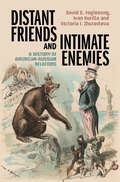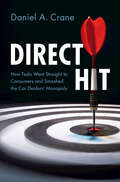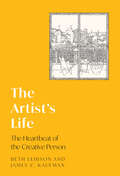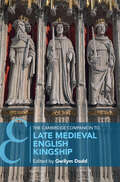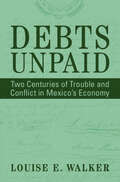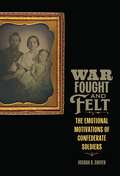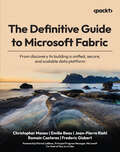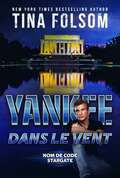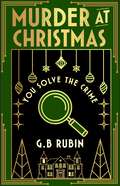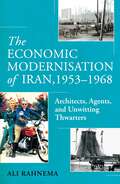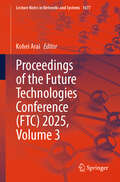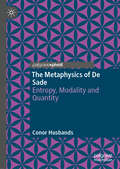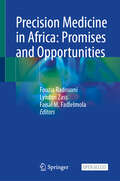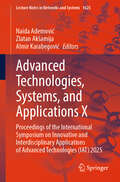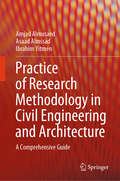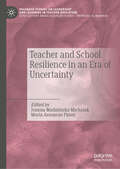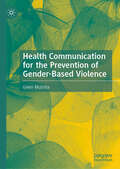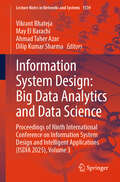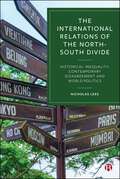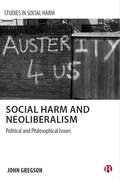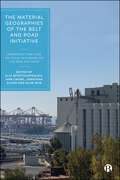- Table View
- List View
Distant Friends and Intimate Enemies: A History of American-Russian Relations
by Ivan Kurilla Victoria I. Zhuravleva David S. FoglesongThis bold, sweeping history of the turbulent American-Russian relationship is unique in being written jointly by American and Russian authors. David Foglesong, Ivan Kurilla and Victoria Zhuravleva together reveal how and why America and Russia shifted from being warm friends and even tacit allies to being ideological rivals, geopolitical adversaries, and demonic foils used in the construction or affirmation of their national identities. As well as examining diplomatic, economic, and military interactions between the two countries, they illuminate how filmmakers, cartoonists, writers, missionaries and political activists have admired, disparaged, lionized, envied, satirized, loved, and hated people in the other land. The book shows how the stories they told and the images they created have shaped how the two countries have understood each other from the eighteenth century to the present and how often their violent clashes have arisen from mutual misunderstanding and misrepresentations.
Direct Hit: How Tesla Went Straight to Consumers and Smashed the Car Dealers' Monopoly
by Daniel A. CraneSince 2013, Elon Musk has been at war with car dealers in the United States. Battles have played out in legislative backrooms, courtrooms, governors' offices, and news media outlets across the country. As of now, Musk has won the war. Telsa has established a foothold across the country, sold over 2 million cars without using a dealer, established a loyal customer base, and overcome most states' franchise dealer laws. Direct Hit tells the story of this fight, taking readers into courtrooms and legislative halls where the dealers tried in vain to derail Tesla's advances. The book shares key insights on the strategic choices made by dealers, legacy car companies, and electric-vehicle startups. With a combination of historical narrative, blow-by-blow accounts of the Tesla wars, and a consideration of America's longstanding romance with the personal automobile, Direct Hit shares a uniquely American drama over cars and the people who sell them.
The Artist's Life: The Heartbeat of the Creative Person
by James C. Kaufman Beth LeibsonThis book delves into the lives, growth, and inner workings of creative artists, sharing stories about the lives of those who have built their career in the arts. Drawing from interviews with more than 60 expert artists from varied domains - including Oscar, Grammy, Emmy, and Pulitzer Prize winners - these detailed, intimate, and surprising anecdotes shed light on creativity from both personal and professional perspectives. Chapters focus on the influences of family and school on creativity, through early discoveries and passions that led to growth and development. In their own words, interviewees describe the joys of 'making it' in the creative world alongside the realities of the business, from finances to relationships and possible legacies. Taking a narrative approach that reveals the hidden truths about being a creative artist, this book offers a unique window on creativity for researchers and artists alike.
The Cambridge Companion to Late Medieval English Kingship (Cambridge Companions to History)
by Gwilym DoddFor over a hundred years scholars have written about late medieval kingship, and a vast body of published work now exists on the subject. However, in all this rich coverage, no accessible introduction to the subject exists. The Cambridge Companion to Late Medieval Kingship addresses this need by bringing together, within a single volume, a series of themed chapters which consider key aspects of the workings of the English monarchy between 1200 and 1500. Featuring leading experts in the field, each chapter provides a concise and accessible guide, offering insights, synthesis and explanation to help readers understand not only how kings ruled, but also what made their rule more – or less – effective. By adopting a holistic approach to kingship, the contributors also consider how kingship impacted on the king's subjects, thereby illuminating the complex interplay of cooperation and conflict that shaped both the monarchy and the wider polity in late medieval England.
Debts Unpaid: Two Centuries of Trouble and Conflict in Mexico's Economy (Cambridge Latin American Studies)
by Louise E. WalkerPower struggles between debtors and creditors about unpaid debts have animated the history of economic transformation from the emergence of capitalist relations to the recent global financial crashes. Illuminating how ordinary people fought for economic justice in Mexico from the eve of independence to the early 2000s, this study argues that conflicts over small-scale debts were a stress test for an emerging economic order that took shape against a backdrop of enormous political and social change. Drawing on nearly 1,500 debt conflicts unearthed from Mexican archives, Louise E. Walker explores rapidly changing ideas and practices about property rights, contract law, and economic information. This combination of richly detailed archival research, with big historical and theoretical interpretations, raises provocative new questions about the moral economy of the credit relationship and the shifting line between exploitation and opportunity in the world of everyday exchange.
War Fought and Felt: The Emotional Motivations of Confederate Soldiers (Conflicting Worlds: New Dimensions of the American Civil War)
by Joshua R. ShiverJoshua R. Shiver’s War Fought and Felt advances our grasp of the links between masculinity, emotion, and relationships during the American Civil War. It is the first broadly researched, multidisciplinary, and statistically supported approach to understanding the pivotal role of emotions in the everyday lives of Confederate soldiers. Using a source base of more than 1,790 letters and diaries from two hundred Confederate soldiers from North Carolina and Alabama, it builds upon traditional sociocultural and ideological arguments for why Confederate soldiers fought. Drawing on history, psychology, sociology, philosophy, and neuroscience, it underscores the necessity of examining primal emotions when looking to understand soldiers’ motivations. It argues that the heightened emotions felt by these soldiers drove them to suffer, fight, desert, and willingly die.Shiver examines the vital role of emotions within the context of soldiers’ relationships with their parents, children, wives, sweethearts, and comrades. These relationships and the emotions they engendered defined Confederate soldiers’ firsthand experiences of war and ultimately redefined the Confederate cause itself. A war that began steeped in ideology ended, for the soldiers, as one fought for the protection and future of one’s loved ones. Shiver demonstrates that the emotionally overwhelming nature of the war forced a tectonic shift in American masculinity in which the prewar emphasis on stoic individualism gave way to an outpouring of emotional expression and mutual interdependence. As a result, Confederate soldiers pragmatically embraced emotional and relational norms that were previously considered taboo.By placing emotion alongside traditional ideological and sociocultural explanations for motivation, Shiver sheds light on a new area of research that promises to promote a deeper understanding of why the American Civil War was one of the bloodiest, most emotionally influential, and world-changing events of the last two centuries.
The Definitive Guide to Microsoft Fabric: From discovery to building a unified, secure, and scalable data platform
by Christopher Maneu Emilie Beau Jean-Pierre Riehl Romain Casteres Frederic GisbertMaster Microsoft Fabric from basics to advanced architectures with expert guidance to unify, secure, and scale analytics on real-world data platformsKey FeaturesBuild a complete data analytics platform with Microsoft FabricApply proven architectures, governance, and security strategiesGain real-world insights from five seasoned data expertsPurchase of the print or Kindle book includes a free PDF eBookBook DescriptionMicrosoft Fabric is reshaping how organizations manage, analyze, and act on data by unifying ingestion, storage, transformation, analytics, AI, and visualization in a single platform. The Definitive Guide to Microsoft Fabric takes you from your very first workspace to building a secure, scalable, and future-proof analytics environment. You’ll learn how to unify data in OneLake, design data meshes, transform and model data, implement real-time analytics, and integrate AI capabilities. The book also covers advanced topics, such as governance, security, cost optimization, and team collaboration using DevOps and DataOps principles. Drawing on the real-world expertise of five seasoned professionals who have built and advised on platforms for startups, SMEs, and Europe’s largest enterprises, this book blends strategic insight with practical guidance. By the end of this book, you’ll have gained the knowledge and skills to design, deploy, and operate a Microsoft Fabric platform that delivers sustainable business value.What you will learnUnderstand Microsoft Fabric architecture and conceptsUnify data storage and data governance with OneLakeIngest and transform data using multiple Fabric toolsImplement real-time analytics and event processingDesign effective semantic models and reportsIntegrate AI and machine learning into data workflowsApply governance, security, and compliance controlsOptimize performance and costs at scaleWho this book is forThis book is for data engineers, analytics engineers, architects, and data analysts moving into platform design roles. It’s also valuable for technical leaders seeking to unify analytics in their organizations. You’ll need only a basic grasp of databases, SQL, and Python.
Yankee dans le Vent (Nom de Code Scanguards)
by Tina FolsomEn enquêtant sur la mort de son collègue agent de Stargate, Jack « Yankee » Porter rencontre la cousine du défunt, Lilly Davis, qui s'interroge sur les circonstances de la mort de son cousin. En suivant les indices, Yankee et Lilly ne peuvent que constater que le mystérieux M. Smith, qui chasse les anciens agents de Stargate, prévoit quelque chose d'encore plus infâme que la mort pour les agents de l'ancien programme top secret de la CIA : se servir d'eux dans le but de nuire. Nom de Code Stargate Ace en Fuite (#1) Fox en Vue (#2) Yankee dans le Vent (#3) Tiger à l'Affût (#4) Hawk en Chasse (#5) Hors de l'Olympe Une Touche de Grec (#1) Un Parfum de Grec (#2) Un Goût de Grec (#3) Un Souffle de Grec (#4) Gardiens de la Nuit Amant Révélé (#1) Maître Affranchi (#2) Guerrier Bouleversé (#3) Gardien Rebelle (#4) Immortel Dévoilé (#5) Protecteur Sans Égal (#6) Démon Libéré (#7) Les Vampires Scanguards La belle mortelle de Samson (#1) La provocatrice d'Amaury (#2) La partenaire de Gabriel (#3) L'enchantement d'Yvette (#4) La rédemption de Zane (#5) L'éternel amour de Quinn (#6) Les désirs d'Oliver (#7) Le choix de Thomas (#8) Discrète morsure (#8 ½) L'identité de Cain (#9) Le retour de Luther (#10) La promesse de Blake (#11) Fatidiques Retrouvailles (#11 ½) L'espoir de John (#12) La tempête de Ryder (#13) La conquête de Damian (#14) Le défi de Grayson (#15) L'amour interdit d'Isabelle (#16) La passion de Cooper (#17) Le courage de Vanessa (#18) Les Vampires de Venise Nouvelle 1 : Raphael & Isabella Nouvelle 2 : Dante & Viola Nouvelle 3 : Lorenzo & Bianca Nouvelle 4 : Nico & Oriana Nouvelle 5 : Marcello & Jane La Quête du Temps Changement de Sort (#1) Présage du Destin (#2) Le Club des éternels célibataires Tome 1 : L'escort attitrée Tome 2 : L'amante attitrée Tome 3 : L'épouse attitrée Tome 4 : Une folle nuit Tome 5 : Une simple erreur Tome 6 : Une Touche de feu Thriller Témoin Oculaire
Dork Diaries Full-Colour Edition
by Rachel Renee RussellWith brand-new, full-colour illustrations, the book that started the internationally bestselling Dork Diaries series comes alive in full bloom and geared for a new modern middle school audience.New school. New life. New drama.New edition in AMAZING FULL COLOUR!THINK GUMBALLS, RAINBOWS, AND SWEET TREATS! Nikki Maxwell&’s very first diary, filled with drama, tears, and lots of laughs (sometimes snotty ones!) is now filled with SQUEE-worthy new bright, vibrant, sweet-coloured art! OMG!
Murder at Christmas: A cosy crime mystery in the style of a Choose Your Own Adventure
by G. B. RubinSharpen your sleuthing skills and have your magnifying glass at the ready for this interactive festive mystery that casts YOU in the role of the detective – perfect for fans of Murdle looking for their next clever crime fix!The year is 1932. You are Dr Kinn Tenor, a Scotland Yard pathologist with a sideline in private detection when the boys in blue are stumped. You&’re celebrated in the newspapers, but you tend to get the official police&’s backs up – they don&’t take kindly to being upstaged.Two days before Christmas, you attend the opening of your friend Johnny McAlister&’s ritzy new nightclub, the Golden Star. There you meet his cousin, Melissa Thresh – she is being followed and would like you to identify the culprit. But you have also promised your friend Algy Hurley to visit his family seat in Kent, where some poison-pen letters have been causing unrest.? If you travel to Yorkshire with Melissa, you&’re caught up in a locked-room murder mystery featuring a cast of dubious friends, relatives and business associates? If it&’s Hurley Court, you&’re embroiled in a country house whodunnit involving an old family ritual and generations of hidden secretsThis is just the first of many choices you must make: will you pursue this thread? Chase the mysterious stranger? Lay a trap for the guilty party? The decisions you make will take you on your own path to the final unmasking of the villain – or failure.What will you choose? And can you unravel the mystery without losing your festive spirit, your reputation… or your life?MAKE YOUR CHOICETURN THE PAGESOLVE THE CRIME! &‘100% Christmas gift in the making&’ The i
The Economic Modernisation of Iran, 1953–1968: Architects, Agents, and Unwitting Thwarters
by Ali RahnemaIn 1953, Iran was at loggerheads with the US and UK, after Prime Minister Mossadeq nationalised Iran&’s oil reserves. By 1968, under the autocratic rule of the Shah, Iran was a booming export economy, benefiting from high oil prices and consumer demand. It had unambiguously become a modern industrial economy. Sifting through primary and secondary sources, Ali Rahnema charts Iran&’s progress in this vital fifteen-year period. He asks, who can claim the credit? And who bears the blame for its critical failures?
Proceedings of the Future Technologies Conference (Lecture Notes in Networks and Systems #1677)
by Kohei AraiThis book aims to provide a comprehensive reference for the research community and practitioners engaged in future technologies. The Future Technologies Conference (FTC) 2025 was held on 6–7 November 2025 in Munich, Germany, bringing together researchers, academics, and industry professionals to present and discuss advances in various technology areas. The conference encompassed topics such as Technology Trends, Artificial Intelligence, Computer Vision, Data Science, Computing, Ambient Intelligence, Security, and e-Learning. A total of 485 papers were submitted, and following a thorough peer-review process, 175 papers were accepted for publication. These proceedings include contributions that highlight both foundational research and practical applications in emerging technologies.
The Metaphysics of De Sade: Entropy, Modality and Quantity
by Conor HusbandsThis book present Sade&’s core metaphysical commitments as a coherent and logical system. It analyses his central ontological principle of entropy and shows that Sade endorsed neither egoism nor materialism but was a forerunner to 19th Century thermodynamics. It then turns to his philosophy of money and finance, including his critique of phenomenology, his axiology, and his attack on theories of expected utility. It concludes by considering the extent to which a normative ethical theory can be salvaged from his otherwise largely deconstructive opus. The Metaphysics of De Sade is essential reading for all scholars and researchers of early modern philosophy.
Cerebrotendinous Xanthomatosis: A Treatable Rare Neurometabolic Disorder
by Antonio Federico Andrea E. DeBarber Tzipora C. Falik-Zaccai Hidde H. Huidekoper Robert D. SteinerThis book represents an update on the clinical, biochemical and molecular genetic findings of a rare neurometabolic disorder. Cerebrotendinous xanthomatosis (CTX), first described in 1937, is a rare genetic disorder of bile acid synthesis that can cause developmental and cognitive disability, irreversible neurological damage and premature death. Left untreated, the syndrome is slowly progressive but can now be considered a treatable rare neurologic disease of lipid and bile metabolism. Early identification of this disorder, for example with newborn screening, would be highly significant as the burden of disease if left untreated can be profound, and morbidity and mortality easily prevented through early detection and treatment. The book collects the experience of expert physician-scientists and researchers from all over the world, beginning with the history of the disease and providing updates on the new molecular genetic data, the therapies and the international patient advocacy organizations, also with chapters reporting the experiences of the patients and calling for improved international basic research and clinical collaboration, aiming to advance understanding and enhance outcomes for CTX patients and their families, and foster patient group partnerships. The volume stems from the proceedings of an international meeting held in Jerusalem, Israel, where this disease was investigated for many years by a pioneer in the field, Prof. Vladimir Berginer at the Ben-Gurion University of the Negev. This meeting was hosted by the CTX Alliance, a patient advocacy group based in the USA.
Internationale Währungs- und Finanzbeziehungen (Studienwissen kompakt)
by Eckart KochDieses Lehrbuch möchte die faszinierende, aber auch komplizierte Thematik der Internationalen Finanzbeziehungen überschaubarer, verständlicher und damit auch interessanter machen. Grundlegende modelltheoretische Überlegungen werden flankiert von einer erklärend exemplarischen Darstellungsweise vor dem jeweiligen historischen Hintergrund. Hierzu werden die vielfältigen Beziehungen und Entwicklungen sinnvoll strukturiert, um sie dann zu analysieren sowie Bedeutungszusammenhänge sichtbar zu machen und zu erklären. Praxisbezogene Überlegungen und Beispiele, die Erläuterung von Zusammenhängen und neue Blickwinkel ergänzen und erweitern den theoretischen Lehrstoff.
Precision Medicine in Africa: Promises and Opportunities
by Fouzia Radouani Lyndon Zass Faisal M. FadlelmolaThe relevance of genomic medicine embodies using an individual's genomics and molecular genetic information to personalize treatment and predict drug response to ensure safer and more cost-effective therapies. An African framework for implementing genomic medicine was recently developed to highlight the elements required within the African context and provide some recommendations on how African countries can work on putting them in place by building on existing infrastructure. These measures would enable resource-limited countries to implement appropriate genomics-based health-related interventions, drawing on experiences from elsewhere but adapting to the African context where necessary. In developing the framework, the existing genomic medicine activities in Africa were investigated. This book aims to describe the current status of precision medicine and discuss the clinical studies related to precision medicine that have been conducted on African populations to improve healthcarein Africa. This book comprises three sections: infectious diseases, non-communicable diseases, and bioinformatics tools and resources. Each section is covered in several chapters, each dealing with a specific disease or group of diseases together with the necessary formalism. Based on existing literature, the collection summarizes Africa's state of the art of genomics and precision medicine activities. The book is helpful for researchers, clinicians, and policymakers; the secondary audience is students, funders, and healthcare staff. This is an open access book.
Advanced Technologies, Systems, and Applications X: Proceedings of the International Symposium on Innovative and Interdisciplinary Applications of Advanced Technologies (IAT) 2025 (Lecture Notes in Networks and Systems #1625)
by Naida Ademović Zlatan Akšamija Almir KarabegovićThis book presents the proceedings of the 16th Days of the Bosnian-Herzegovinian American Academy of Arts and Sciences (BHAAAS), held in Sarajevo, Bosnia and Herzegovina, from June 19–22, 2025. The Conference Proceeding Book showcases the outcomes of seven dynamic technical sessions, covering a broad spectrum of topics: AI Across Disciplines: Transformative applications in various fields, civil engineering, mechanical engineering, advanced electrical power systems, data science and geographic information systems, information and communication technologies. Every session provides insightful information on recent developments, research trends, and new inventions. This publication encourages interdisciplinary discussion and cooperation by combining contributions from various subjects, which reflects BHAAAS's dedication to connecting scientific communities across disciplines. The editors sincerely thank all symposium chairs for their valuable contributions to this book.
Practice of Research Methodology in Civil Engineering and Architecture: A Comprehensive Guide
by Amjad Almusaed Ibrahim Yitmen Asaad AlmssadThis book offers a comprehensive exploration of research methodology, providing invaluable insights for students and researchers in the AEC industry and engineering fields. Through this book, readers learn the theoretical and practical aspects of research design and academic writing, making it an indispensable resource for anyone engaged in scholarly investigation. This book covers a wide range of topics essential to robust research practices. Readers explore identifying research gaps, formulating problem statements, crafting precise research questions, objectives, and aims. This book delves into the philosophical foundations of different research paradigms—ontological and epistemological factors that impact methodological decisions. It also provides an in-depth examination of qualitative methods such as ethnography, grounded theory, narrative analysis; quantitative methods including experimental design, survey techniques; as well as mixed-methods approaches that combine both to yield comprehensive results. In addition to theoretical content, this book offers practical tools like templates for research proposals and checklists for data collection. These resources are designed to aid researchers in efficiently applying their knowledge in real-world settings. The authors emphasize clarity, coherence, and scholarly rigor in academic writing while providing practical techniques to overcome common obstacles faced by researchers. This book is essential for researchers, scholars, students at all levels who seek to enhance their understanding of research methodology. It provides clear guidance on structuring and organizing research articles, performing literature reviews, presenting findings with scholarly rigor. Whether you are a novice researcher or an experienced academician looking to refine your skills or gain new perspectives on methodological practices—this book is tailored to meet your needs. Researchers in fields such as architecture, engineering construction (AEC), environmental design find this work particularly beneficial. Its comprehensive scope guarantees its authenticity usefulness rendering it indispensable literary essential study academic writing methodological investigation.
Teacher and School Resilience in an Era of Uncertainty (Palgrave Studies on Leadership and Learning in Teacher Education)
by Joanna Madalińska-Michalak Maria Assuncao FloresThis book explores the nature of teacher and school resilience in times of uncertainty, and how resilience can be nurtured within individual schools and educational systems as a whole. Innovative approaches to exploring these concepts are presented, as well as the role of educational research and practice in providing opportunities for sustainable, peaceful and equitable growth of societies, where diversity and diversification under conditions of uncertainly and risk are appreciated. The book&’s contributors show that teacher and school resilience can be promoted through high-quality teacher education and nurtured by school leaders at different levels. Directions for future research are also indicated. The book enriches relevant theory and research in the field of teaching, teacher professional development, teacher education, education policy and school leadership.
Health Communication for the Prevention of Gender-Based Violence
by Given MutintaThis book highlights the role of traditional media in shaping public perceptions of gender-based violence and how digital media has revolutionised health communication. It also discusses the potential of indigenous communication tools, such as folktales and oral traditions, to prevent gender-based violence in marginalised communities. The book highlights the need for partnerships between organisations, healthcare providers, and community leaders to enhance resource sharing and adapt to evolving community needs, and underscores how continuous monitoring and evaluation of these programmes are crucial for a successful fight against gender-based violence. The book argues that evidence-based recommendations for improving health communication efforts and increasing awareness can help create a more secure and equitable society.
Information System Design: Proceedings of Ninth International Conference on Information System Design and Intelligent Applications (ISDIA 2025), Volume 3 (Lecture Notes in Networks and Systems #1539)
by Ahmad Taher Azar Vikrant Bhateja Dilip Kumar Sharma May El BarachiThis book presents a collection of high-quality, peer-reviewed research papers from 9th International Conference on Information System Design and Intelligent Applications (ISDIA 2025), held in Dubai, UAE, from 3–4 January 2025. It covers a wide range of topics in computer science and information technology, including data mining and data warehousing, high-performance computing, parallel and distributed computing, computational intelligence, soft computing, big data, cloud computing, grid computing, cognitive computing, and information security.
The International Relations of the North–South Divide: Historical Inequality, Contemporary Disagreement and World Politics
by Nicholas LeesAvailable open access digitally under a CC-BY-NC-ND license. This book examines the significance of both historical and contemporary inequality in shaping diplomatic disagreements in international relations. The author demonstrates that the North-South divide has endured into the 21st century by drawing on three decades of data measuring the foreign policy positions of states on divisive global issues, including new text-based measures of international priorities within the United Nations General Assembly. This divide reflects the dissatisfaction of many states of the Global South with the post-Cold War international order, owing to historical legacies of unequal development. Wide-ranging and rigorous, this new empirical investigation demonstrates the ongoing relevance of material inequality for international politics and the multilateral system.
Social Harm and Neoliberalism: The Problem of Ignorance (Studies in Social Harm)
by John GregsonThis book links criminological, political, moral, and philosophical issues to offer a deeper understanding of the problem of social harm within the neoliberal environment. Illustrated through case studies, John Gregson shows that social harms are a problem created not only by politics or economics, states or corporations, but also by the individualism that neoliberal societies encourage. He argues that key factors that deepen the problem of social harm include the neoliberal production of ignorance and subjectivity, along with liberal modernity itself.
The Material Geographies of the Belt and Road Initiative: Infrastructures and Political Ecologies on the New Silk Road
by Elia Apostolopoulou, Han Cheng, Jonathan Silver and Alan WiigEPUB and EPDF available open access under CC-BY-NC-ND licence. China’s Belt and Road Initiative (BRI), commonly called the New Silk Road, is a huge infrastructure project currently revitalising or creating new trading routes and large developments across the globe. It is estimated to cost up to US$8 trillion and impact more than 65% of the world’s population. This book explores the unequal ways this controversial project is altering livelihoods, places and the environment. From road building projects in Nairobi to grassroots environmental activism in Thailand, researchers from the Global North and South analyse the real-world impacts of this unprecedented project, bringing together critical geography and political ecology approaches.
Harlequin Historical - December 2025 - Box Set 1 of 2
by Carla Kelly Joanna Johnson Samantha Hastings Eva Shepherd Sophia WilliamsHarlequin Historical – December 2025 – Box Set 1 of 2Harlequin ® Historical brings you a captivating trio of thrilling new romances in one collection!This boxset includes:SNOWBOUND REGENCY CHRISTMASBy Carla Kelly, Joanna Johnson, Samantha Hastings(Regency)In A Christmas Houseguest by Carla Kelly, when a snowstorm stops their mailcoach, Rosie offers a fellow passenger sanctuary at her farm. War-weary from the navy, Andy will find his Christmas angel hard to leave…In Their Yuletide Reunion by Joanna Johnson, rejecting Lieutenant Fitzjames&’s proposal is Jane&’s greatest regret. Now, her future is in peril. Until an unexpected Christmas invitation leads to a second chance!In The Christmas Husband Charade by Samantha Hastings, Devin finds himself snowed in with Julia—the woman who jilted his brother! When he is forced to masquerade as her husband, their mutual hatred evolves into an irresistible connection… THE DUKE&’S CHRISTMAS FAKE FIANCÉEBy Sophia Williams(Regency)Lady Cecily Carlow knows she will never marry. No matter—the money she will earn from her first novel should allow her to live independently. But when her odious aunt finds Cecily a rude but willing fiancé, she needs a plan—fast! Felix, Duke of Garth, has a way to help his best friend: a fake engagement for the festive season! Felix will never love again after losing his wife, but making Cecily his temporary fiancée will see off her suitor. Yet, as Christmas draws near, the unexpected attraction between them grows shockingly hard to resist! A MISTLETOE MATCH FOR THE EARLPart of Wayward WallflowersBy Eva Shepherd(Victorian)After a disastrous Season, Alice has given up on marriage for herself, but not for her friends. This Christmas, she&’ll matchmake her friend with a neighboring Earl. Only when Alice calls upon him, she finds James a changed man—scarred, brooding, grumpy! And now she&’s snowed in with him…James Marlowe, the new Earl of Thornwood, has returned to take possession of his neglected Lake District estate and heal his broken heart. He has no need of Alice&’s irritating Christmas cheer. But when an awkward mistletoe kiss turns passionate, the ice begins to melt around his frostbitten soul…
